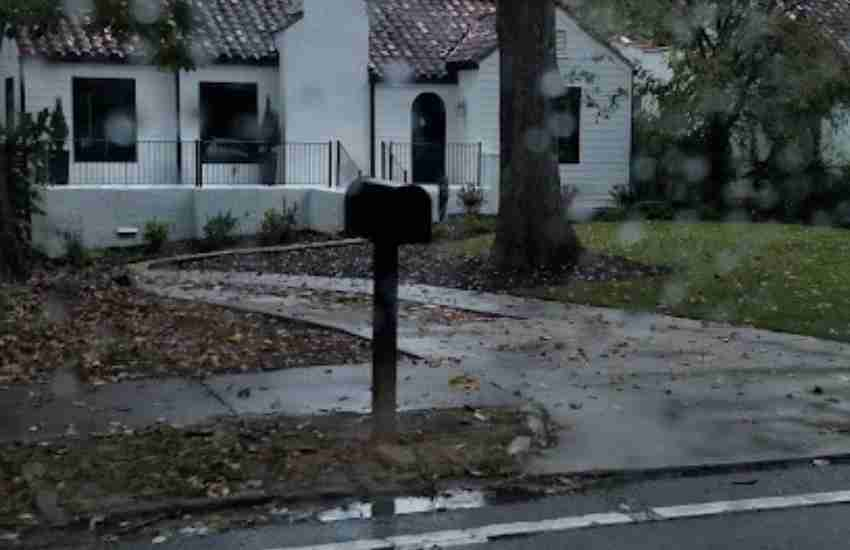As you stroll through the tree-lined streets of Druid Hills in Atlanta, you’ll find yourself immersed in a world where history and modernity coexist seamlessly. The allure of this neighborhood goes beyond its architectural beauty and lush landscapes. With a blend of old-world charm and contemporary amenities, Druid Hills offers a unique living experience that appeals to a diverse array of residents. But what lies beneath the surface of this picturesque enclave may surprise you, hinting at a tapestry of stories waiting to be unraveled.
History of Druid Hills
Druid Hills’ history unfolds as a testament to Fredrick Law Olmsted’s visionary suburban planning expertise. Designed as a planned community by Olmsted, known for his work on Central Park in New York City, Druid Hills boasts a rich historical tapestry. Asa Candler, the renowned founder of Coca-Cola, played a pivotal role in the development of this neighborhood, ensuring its growth and prosperity.
The streets of Druid Hills are lined with historic homes and grand mansions dating back to the late 19th and early 20th centuries. These architectural marvels stand as a testament to the wealth and sophistication of the era, reflecting a blend of different styles and influences. The neighborhood’s designation on the National Register of Historic Places in 1975 underscores its significance in preserving Olmsted’s design principles and the rich heritage of the community.
Druid Hills remains a living museum of grandeur and elegance, inviting visitors to step back in time and appreciate its timeless beauty.

Geographic Features of Druid Hills
Nestled within DeKalb County, Georgia, the geographic features of the Druid Hills neighborhood encompass a picturesque landscape defined by historic mansions, lush greenery, and a network of parks.
The historic mansions within Druid Hills, dating back to the late 19th and early 20th centuries, were designed by renowned landscape architect Frederick Law Olmsted, adding a touch of grandeur to the area. Along Ponce de Leon Avenue, the neighborhood boasts a scenic stretch of parks and green spaces, enhancing its natural beauty.
Designated on the National Register of Historic Places in 1975, Druid Hills stands out for its well-preserved architectural heritage, attracting visitors interested in its rich history.
Situated adjacent to neighborhoods like Morningside, Lenox Park, Virginia-Highland, and Poncey-Highland, Druid Hills offers a unique blend of old-world charm and modern amenities, making it a sought-after destination in the Atlanta area for those looking to explore its historic roots and scenic landscapes.
Demographic Profile of Druid Hills
The demographic landscape of Druid Hills reflects notable shifts in population size and diversity over the past two decades. In 2020, Druid Hills had a population of 9,429, showing fluctuations compared to the 12,742 residents recorded in the 2000 Census. The racial and ethnic composition of the area has also undergone changes during this period, as indicated by census data. Household sizes and median income levels within the Census Designated Place (CDP) of Druid Hills vary, providing insights into the diverse household structures and income distribution in the community.
The 2000 Census highlighted the diverse racial makeup and household structures present in Druid Hills at that time. These demographic changes over the years have contributed to the shifting dynamics of the community’s socio-economic landscape. Census data continues to be a valuable resource for understanding the evolving demographic composition and economic characteristics of Druid Hills.
Economic Landscape of Druid Hills
Influenced by prominent institutions like Emory University and the CDC headquarters, the economic landscape of Druid Hills exhibits a dynamic mix of businesses and services contributing to its vitality. The presence of Emory University Hospital and Children’s Healthcare of Atlanta – Egleston Hospital not only provides essential healthcare services to the community but also stimulates economic growth. Emory Villa stands out as a key economic landmark, further bolstering the neighborhood’s economic development.
Moreover, the accessibility of public transportation, including MARTA and Emory University shuttles, enhances the connectivity within the area, facilitating the movement of residents and visitors. The diverse range of businesses and institutions in Druid Hills creates a robust economic environment, attracting both local residents and outsiders.
Arts and Culture in Druid Hills
With its array of cultural landmarks and artistic institutions, Druid Hills showcases a vibrant arts and culture scene that enriches the community’s identity and charm. The neighborhood is home to the renowned Callanwolde Fine Arts Center, situated in the former estate of Charles Howard Candler. Additionally, the Atlanta Boy Choir adds to the cultural tapestry of the area, located on S. Ponce de Leon Avenue.
Druid Hills boasts several notable parks, including Baker Woodland, Burbanck Park, Fernbank Forest, Hahn Woods, and Olmsted Linear Park, providing residents and visitors with serene green spaces to enjoy. These parks complement the artistic atmosphere of the neighborhood, offering a balance between nature and culture.
Architectural landmarks like the Callanwolde Fine Arts Center further contribute to the cultural richness of Druid Hills, blending history with creativity. The arts and cultural institutions within the neighborhood play a crucial role in shaping its unique character and fostering a sense of community pride.
Parks and Green Spaces in Druid Hills
Nestled within Druid Hills are a series of parks and green spaces that enhance the neighborhood’s natural beauty and provide tranquil retreats for residents and visitors alike. Designed by Frederick Law Olmsted, the parks along Ponce de Leon Avenue offer a peaceful escape amidst the hustle and bustle of Atlanta. The lush greenery of Druid Hills harmoniously complements its historic homes and estates, creating a serene environment that invites leisurely strolls and moments of contemplation.
Asa Candler, known for his role in establishing Coca-Cola, also played a part in the development of Druid Hills, adding to its historical significance. Notably, four districts within Druid Hills are listed on the National Register of Historic Places, underscoring the neighborhood’s rich heritage and architectural importance. The emphasis on parks and green spaces in Druid Hills not only reflects Olmsted’s vision for harmonious suburban living but also contributes to the overall charm and appeal of this Atlanta neighborhood.
Government Services in Druid Hills
The unique governmental structure of Druid Hills, divided between Atlanta city and unincorporated DeKalb County, directly impacts the provision of essential services to its residents. Government services in Druid Hills are influenced by the jurisdictional boundaries, with the Druid Hills Civic Association playing a role in providing input to authorities in both Atlanta and DeKalb County.
The DeKalb County School District serves the educational needs of Druid Hills residents, overseeing schools like Fernbank Elementary and Druid Hills High. Additionally, various community organizations, such as the Alliance to Improve Emory Village and Fernbank Forest, actively contribute to enhancing the neighborhood through collaboration with local government entities.
This collaborative approach between government services and community organizations helps address the specific needs of the residents and ensures the efficient delivery of essential services in Druid Hills.
Infrastructure in Druid Hills
How does the infrastructure in Druid Hills reflect the influence of key healthcare facilities and economic landmarks in the neighborhood?
The presence of Emory University Hospital and Children’s Healthcare of Atlanta – Egleston Hospital significantly impacts the infrastructure of Druid Hills. These healthcare facilities not only provide essential services but also attract resources that contribute to the neighborhood’s development. Moreover, the proximity of the CDC headquarters plays a role in shaping the infrastructure of the area.
Emory Villa, a notable economic landmark within Druid Hills, further influences the neighborhood’s infrastructure by attracting business and investment. The mix of businesses and institutions in the area adds to the economic vibrancy and diversification of infrastructure in Druid Hills.
Public transportation, including MARTA buses and Emory University shuttles, also play a crucial role in connecting the neighborhood and its various components, further enhancing the overall infrastructure. The interplay between healthcare, economic, and transportation elements underscores the dynamic and interconnected nature of Druid Hills’ infrastructure.
Education Options in Druid Hills
The robust educational landscape in Druid Hills is shaped by a diverse array of school options and proximity to esteemed academic institutions such as Emory University and the CDC headquarters.
Within the DeKalb County School District, students in Druid Hills have access to institutions like Fernbank Elementary and Druid Hills High School. These schools offer a foundation for learning within the neighborhood.
Emory University, a renowned higher education institution located in Druid Hills, further enriches the educational resources available to residents. The close proximity to Emory University and the CDC headquarters not only provides educational opportunities but also enhances research prospects for those in the community.
Additionally, various community organizations in Druid Hills actively contribute to educational initiatives and enrichment programs, supplementing the formal schooling system. Residents of Druid Hills benefit from a diverse range of educational options, from public schools to private institutions, creating a well-rounded educational environment within the neighborhood.
Religious Institutions in Druid Hills
Curiously, what role do religious institutions play in the fabric of the Druid Hills neighborhood? Druid Hills boasts a diverse range of religious institutions that cater to various faiths.
St. John’s Lutheran Church and Druid Hills Presbyterian Church are prominent churches in the area, providing spiritual guidance and community support. The Jewish community is served by Congregation Shearith Israel and The Temple, both of which have deep roots in the neighborhood. For the Muslim population, the Islamic Center of North East Atlanta offers a place of worship and community engagement.
These religious institutions aren’t only places of worship but also serve as centers for community events, social gatherings, and charitable activities. They play a vital role in shaping the spiritual and communal life of Druid Hills, fostering a sense of belonging and unity among residents of different faith backgrounds.
Conclusion
You’ve taken a journey through the historic streets of Druid Hills, where the past meets the present in a blend of grandeur and diversity.
As you navigate the lush green spaces and iconic architecture, you witness a vibrant community filled with cultural richness and economic vitality.
From the charming homes to the bustling streets, Druid Hills stands as a testament to the enduring legacy of Atlanta’s past and the promise of its future.

